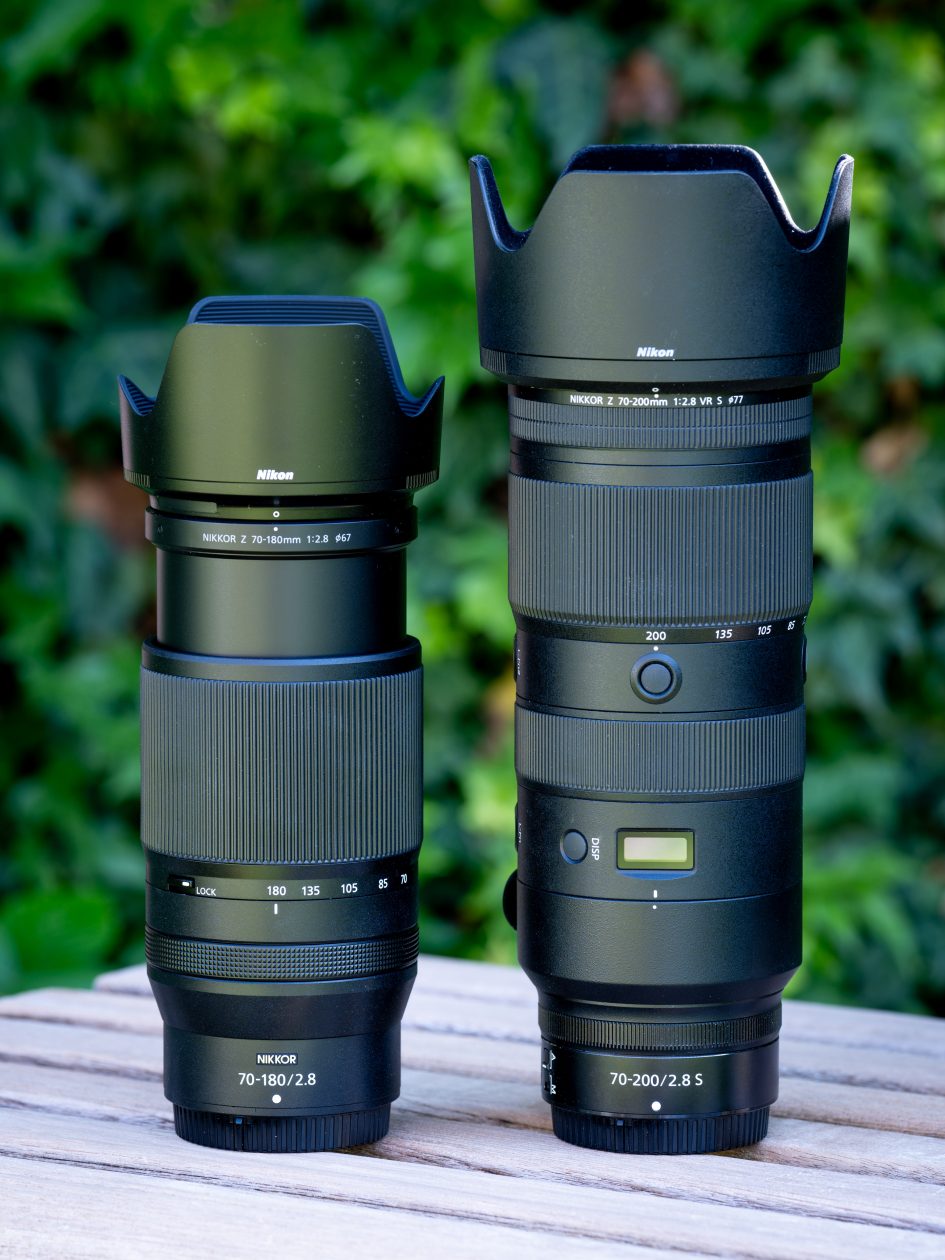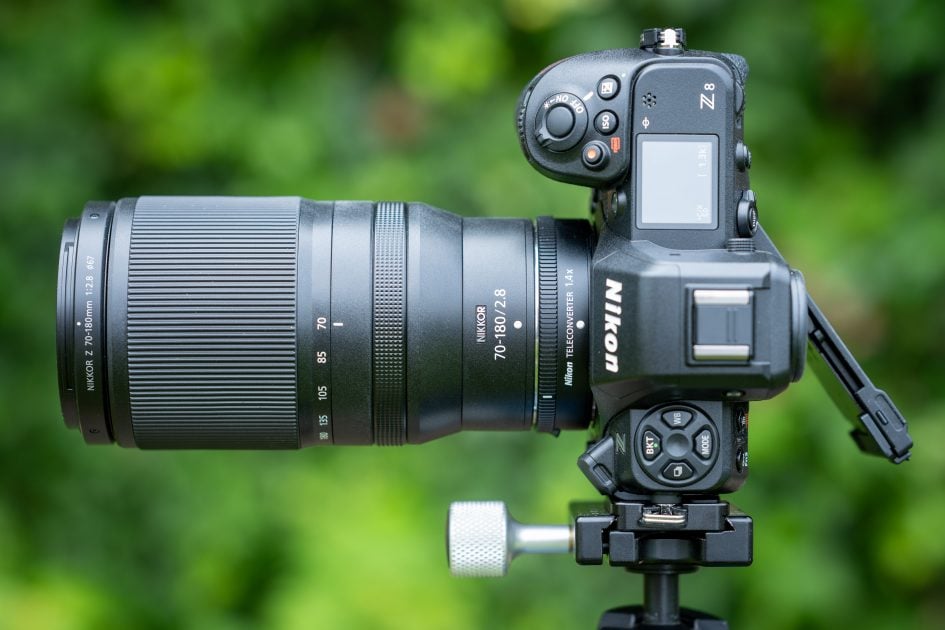Nikon Z 70-180mm f2.8 review
-
-
Written by Thomas
Verdict
The Nikon Z 70-180mm f2.8 is a small and light telephoto zoom designed for Nikon’s Z-mount mirrorless cameras with a constant f2.8 focal ratio. At 1449 EUR / 1247 USD / 1299 GBP it is not exactly cheap but its optical performance is quite good in general: It is sharp across the sensor throughout the zoom range, has practically no colour aberrations, produces a soft Bokeh and focuses quietly and reliably. Its maximum magnification of 1:1.9 at 70mm focal length looks very enticing on paper but be aware that the image quality is limited even when stopped down to f22. But at 180mm focal length the lens produces very usable close-up shots with a magnification of around 1:4. It can also be used with Nikon’s Z teleconverters although image quality degrades visibly especially with the TC 2.0x. And the lens is weather-sealed including anti-fouling coating against moisture and dust on the front element.
What’s not to like? The Nikon Z 70-180mm f2.8 has no optical image stabilization which limits its use on non-stabilized Nikon Z DX cameras. The Z8 though still provides 4-5 stops of image stabilization – which is a pretty impressive feat of the camera. The lens suffers a bit from residual spherical aberrations which produce a soft haze around high contrast edges and overall contrast can suffer under contra-light situations. You might also complain about the missing tripod collar but the lens is light enough to mount the tripod to the camera without fear of bending the lens mount.
Let’s have a closer look at how the new Nikon zoom lens compares to the Nikon Z 70-200mm f2.8 VR S.
Above: Nikon Z 70-180mm f2.8 (left), Nikon Z 70-200mm f2.8 VR S (right)
Compared to Nikon Z 70-200mm f2.8 VR S
The Z 70-200mm f2.8 VR S is Nikon’s professional telephoto zoom lens for their Z-mount mirrorless cameras. As such it is well equipped: optical image stabilization in the lens giving it a one stop advantage, tripod collar, focus limiter, function buttons and OLED display – all features which the Z 70-180mm f2.8 is missing. There’s also the missing 20mm on the long end but I really wouldn’t worry about that. Both lenses have in common their compatibility with Nikon’s Z 1.4x and 2.0x teleconverters, thorough weather-sealing, and anti-fouling coating on the front lens. The major advantages of the 70-180mm zoom lens over its 70-200mm sibling are prize, size and weight: It’s around 40% cheaper, 25% shorter, and 45% lighter.
Optically Nikon’s new Z 70-180mm f2.8 is good but the Z 70-200mm f2.8 VR S is clearly sharper and more contrasty which makes it also a better fit for use with teleconverters. There are only two areas, where the new lens is besting the Nikon Z 70-200mm f2.8 VR S: The Z 70-180mm f2.8 reaches more than double the maximum magnification at 70mm focal length – but you have to stop down heavily to achieve usable image quality outside the center. And the new lens clearly has the softer Bokeh than its professional sibling. All-in-all the Nikon Z 70-180mm f2.8 is a compelling alternative to Nikon’s Z 70-200mm f2.8 VR S.
For more details see my Nikon Z 70-200mm f2.8 VR S review where the lens came Highly Recommended.
Above: Nikon Z 70-180mm f2.8 with Z TC 1.4x
Nikon Z 70-180mm f2.8 final verdict
The Nikon Z 70-180mm f2.8 is a small and light telephoto zoom with a constant f2.8 aperture and corrected for full-frame sensors. It produces pretty good image quality including a soft Bokeh and very usable close-up performance in a package that is around 40% cheaper, 25% shorter, and 45% lighter than Nikon’s Z 70-200mm f2.8 VR S. It may not have all the bells and whistles of Nikon’s professional zoom lens and certainly does not match its image quality. But the Nikon Z 70-180mm f2.8 still is a compelling alternative and clearly earns a recommendation!
Good points:
- Small and light.
- Low price compared to Nikon Z 70-200mm f2.8 VR S.
- Constant f2.8 focal ratio
- Pretty good resolution.
- Almost no longitudinal colour aberrations.
- Nice Bokeh.
- Very usable close-up performance at 180mm focal length.
- Can use teleconverters – albeit at clear loss of sharpness.
- Extensive weather sealing plus anti-fouling coating against moist and dust.
- Low vignetting and minimal distortions (through lens profile).
- 4-5 stops of image stabilization (through camera body).
- Fast, reliable and silent AF operation.
Bad points:
- No tripod collar.
- Contrast in contra-light situations.
- Reaches only 180mm focal length.






